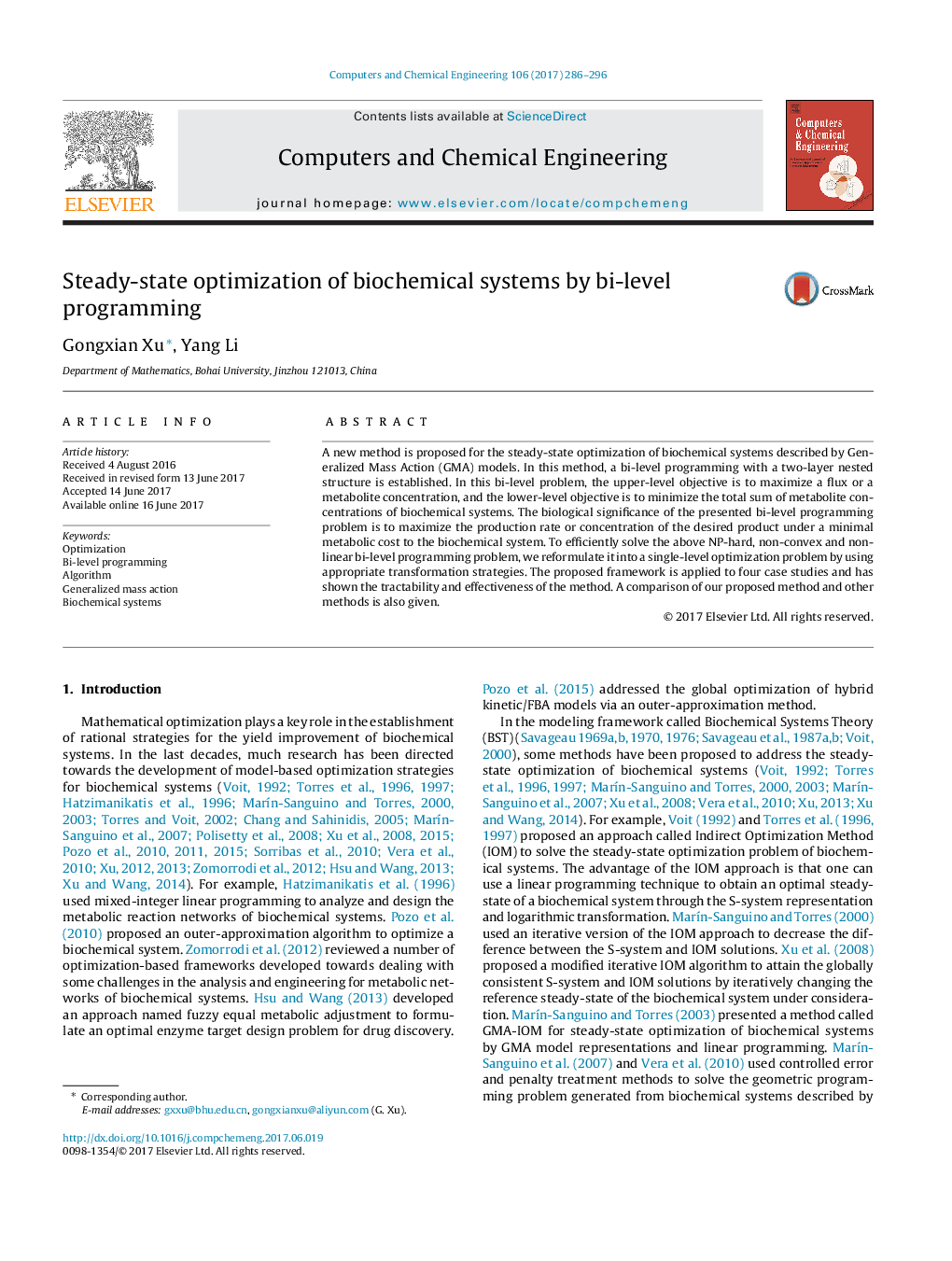| Article ID | Journal | Published Year | Pages | File Type |
|---|---|---|---|---|
| 6469062 | Computers & Chemical Engineering | 2017 | 11 Pages |
â¢Steady-state optimization of biochemical systems by bi-level programming.â¢Bi-level programming model for optimization of biochemical system is proposed.â¢An efficient method is proposed to solve the nonconvex bi-level programming.â¢Compared with other single-level methods, our approach shows a better performance.
A new method is proposed for the steady-state optimization of biochemical systems described by Generalized Mass Action (GMA) models. In this method, a bi-level programming with a two-layer nested structure is established. In this bi-level problem, the upper-level objective is to maximize a flux or a metabolite concentration, and the lower-level objective is to minimize the total sum of metabolite concentrations of biochemical systems. The biological significance of the presented bi-level programming problem is to maximize the production rate or concentration of the desired product under a minimal metabolic cost to the biochemical system. To efficiently solve the above NP-hard, non-convex and nonlinear bi-level programming problem, we reformulate it into a single-level optimization problem by using appropriate transformation strategies. The proposed framework is applied to four case studies and has shown the tractability and effectiveness of the method. A comparison of our proposed method and other methods is also given.
